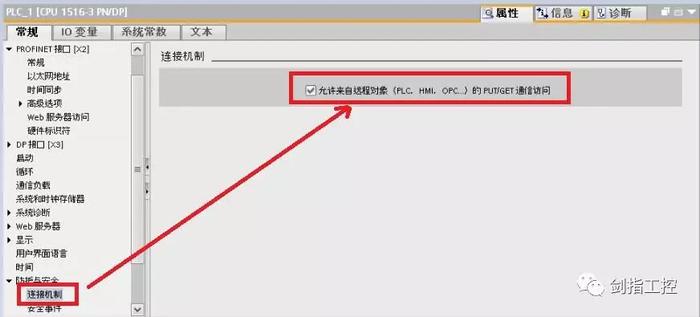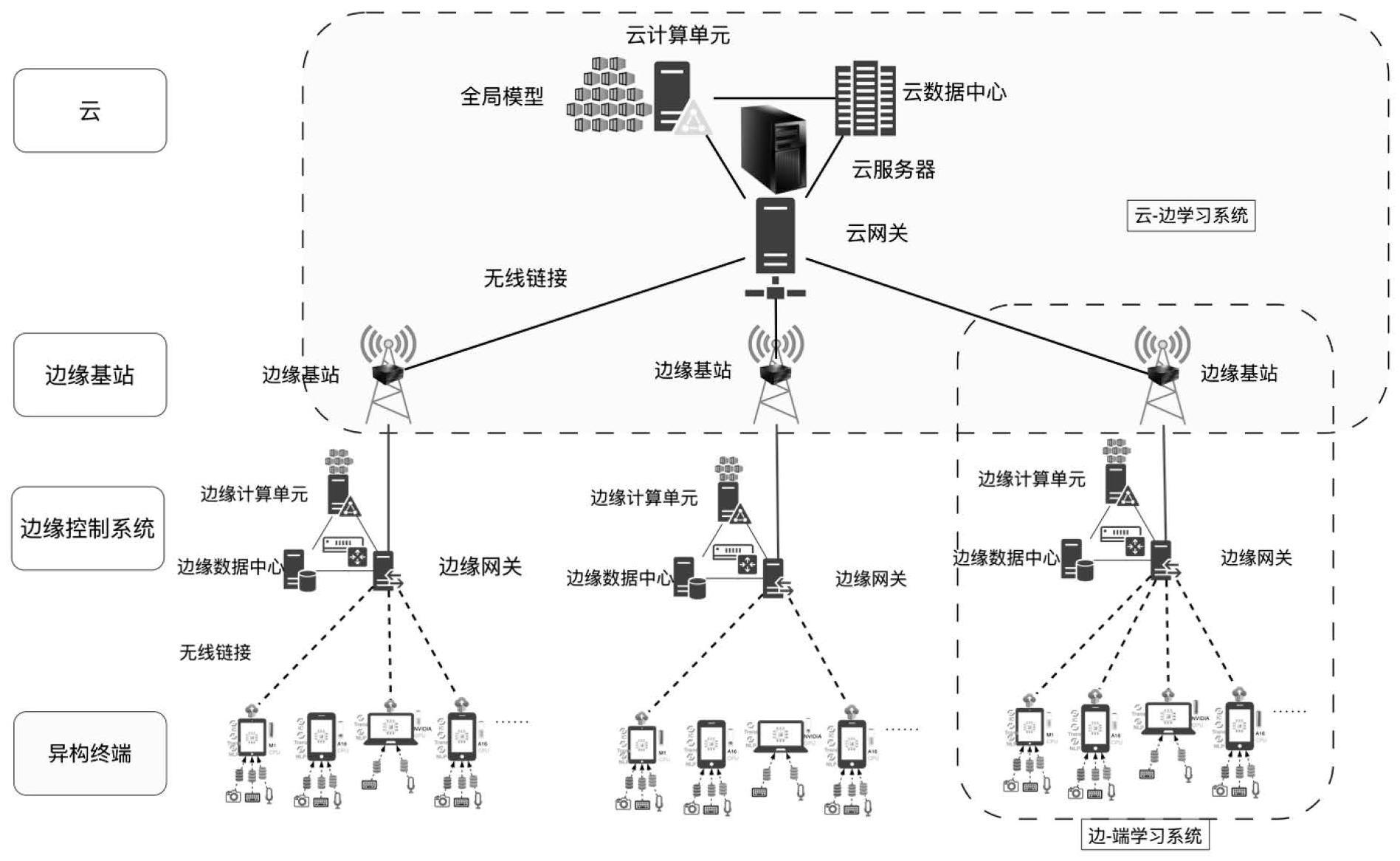
在我们的日常生活、工作或学习中,难以避免会遇到各种挑战和难题。
面对这些问题,我们应保持冷静与理性,并积极寻求解决之道。
本文将探讨一些常见的问题及其可能的解决方案。
一、日常生活中的问题
1. 交通拥堵(Traffic Congestion)
问题:随着城市化进程的加快,交通拥堵已成为许多城市的常见问题。
这不仅浪费了人们的时间,还增加了空气污染。
解决方案:推广公共交通,鼓励绿色出行,如骑自行车、步行或使用电动汽车。
实施道路规划和交通管理系统的智能化,如采用智能交通信号控制,可以有效缓解交通拥堵。
2. 环境污染(Environmental Pollution)
问题:工业发展、城市化以及人类活动导致的环境污染日益严重,全球气候变化、空气质量下降等问题日益突出。
解决方案:推广绿色生产,减少污染物排放。
提高公众环保意识,鼓励低碳生活。
同时,政府应制定严格的环保法规,加大对违法企业的处罚力度。
二、工作中遇到的问题
1. 压力过大(Stress)
问题:工作压力过大可能导致工作效率下降,甚至影响员工的身心健康。
解决方案:企业应关注员工的工作压力问题,提供心理咨询服务,建立合理的压力管理机制。
同时,员工自身也应学会调整心态,通过运动、休息等方式缓解压力。
2. 竞争激烈的职场环境(Competitive Job Market)
问题:随着人口增长和就业压力的增大,职场竞争日益激烈。
解决方案:提高自身专业技能和综合素质是应对职场竞争的关键。
积极参与职业培训、拓展人际关系网络、关注行业动态也有助于增加就业机会。
三、学习中的问题
1. 学习动力不足(Lack of Learning Motivation)
问题:在学习过程中,可能会遇到学习动力不足的情况,导致学习效率低下。
解决方案:设定明确的学习目标,培养学习兴趣。
同时,制定合理的学习计划,保持良好的学习习惯。
激励机制,如奖励、鼓励等也有助于提高学习动力。
2. 学习方法不当(Ineffective Learning Methods)
问题:学习方法不当可能导致学习效果不佳。
解决方案:尝试不同的学习方法,找到适合自己的学习方式。
如阅读书籍、参加培训课程、在线学习等。
与他人交流学习经验,互相学习也有助于提高学习效果。
四、科技发展带来的问题
1. 网络安全问题(Cyber Security Issues)
问题:随着互联网的普及,网络安全问题日益突出,如黑客攻击、个人信息泄露等。
解决方案:加强网络安全法规建设,提高网络安全意识。
使用安全的网络产品和服务,定期更新软件和防火墙。
学习网络安全知识,提高自我保护能力也是预防网络安全问题的关键。
2. 信息过载(Information Overload)
问题:信息爆炸时代,人们面临信息过载的问题,难以筛选有用的信息。
解决方案:培养良好的信息筛选能力,学会使用搜索引擎和社交媒体平台的信息筛选功能。
定期参加培训,提高自身信息素养也有助于解决信息过载问题。
总结:
面对生活中的各种问题,我们应保持积极的心态,寻找合适的解决方案。通过提高环保意识、缓解工作压力、提高学习效率、加强网络安全意识等方式,我们可以更好地应对生活中的挑战。同时,政府、企业和个人都应共同努力,为解决这些问题贡献自己的力量。
帮忙写一篇1500字关于目前世界首要环境问题和解决方案的英文演讲稿,急用!
ENVIRONMENTAL SOLUTION FOR THE NEW MILLENNIUMWant to hear of a panacea for the worlds environmental problems? Simply solve this dilemma: Half of all the married women in the world of child bearing age do not have access to modern contraceptives. The environmental solution: a national and worldwide emphasis on birth control programs. Many ecologists view human overpopulation as the foundation of all environmental problems. Thus many believe the most important environmental groups in the world to be ones like Zero Population Growth (ZPG) from which the above quote comes. ZPG is currently launching its Y6B campaign to focus on the year when the world reached six billion people. Symbolically, October 16 was chosen as the day. ZPGs intent is to get national media icons like Tom Brokaw, Dan Rather, and Peter Jennings to emphasize the problem all six billion of us face. Check out the Web site on following environmental issues can identify a variety of issues of critical importance in the United States or worldwide. Introduced species, destruction of natural habitats, and excessive environmental pollution are three obvious ones. Human overpopulation is the primary culprit for all exotic species like zebra mussels, fire ants, and chestnut blight are here because people brought them to us. Today, invasive species are coming and going in all directions around the globe. We send or carry living things to other continents constantly, on purpose or unknowingly. A world with fewer people would be a world with fewer living things moving around and ending up in the wrong places. The alteration of native habitats by unregulated development of housing areas and sprawl malls makes us wonder if some of our elected officials are in the real estate business. Adding people means finding places for them to live, more food to eat and water to drink, more fuel to keep warm. The means for acquiring these necessities have permanent impacts on the worlds natural forests, rivers, and all other habitats not already being used by people. Endless pollutants continue to be discovered that have serious environmental impacts. Obviously, six billion people, especially the 250,000,000 in the United States, pollute on a grand scale. The environment suffers, and we suffer, in proportion to how many people are using the Earths resources and then discarding them. Environmental conflicts must be considered in many arenas--political, scientific, economic, ethical. Few weeks go by that a new organization is not formed to take up one side of an issue or the other. Special interest groups abound. But ironically, every environmental problem in the world today stems from human overpopulation, a point people in general and politicians and national news media in particular seldom mention. If we solve overpopulation, environmental conflicts will lessen. To appreciate the rate of overpopulation, figure out how many people were on the planet when you were born? 1927? One billion. 1960? Three billion. 1974? Four billion. The first time you ever heard of people starving somewhere, you were hearing of overpopulation. Because about four billion of these people would like to join the mere quarter of a billion of us here in the United States, we have increasing environmental problems. Overpopulation always solves itself in the animal world. Disease and starvation eventually increase when a species becomes too abundant. Humans are animals subject to the same natural laws as other animals. All of us should think about this, for we can actually avoid the consequences of overpopulation by controlling our birth of a global plan of voluntary birth control and family planning is a simple solution to world overpopulation and virtually all the worlds environmental problems. If someone actively discourages birth control programs in regions where population levels have become dangerously high, is that person taking a position of preferring that population levels be controlled by epidemic disease or starvation, the other two options? Do the Pope and other religious leaders think about this? Do members of Congress who vote against aid for birth control programs in heavily populated regions of the world feel the responsibility? And while were on the subject, what is the United Nations doing?Birth control or starvation and disease are our only choices. Have national and world leaders decided it must be the latter? How to solve enviromental problemsAt AsiaIsGreen, we believe that there are already existing solutions and technologies to solve most environmental problems, such as lack of clean drinking water, malaria deaths and climate change. What we need are not solutions and technologies but the willpower and leadership to change the status quo. We also need planning and coordination so that we know what we have to do, what financial resources and manpower are needed, how much time we have, what success looks like, and a process or someone to make sure things get done. There are existing technologies for providing clean drinking water to developing countries. Ask any experienced environmental engineer about the process of obtaining clean water and you will hear of processes like sand filtration, microfiltration, reverse osomosis, solar distillation, desalination and ultraviolet disinfection. We already know how to get clean water from undrinkable water sources, so why do 1.1 billion people still lack access to safe drinking water? Maybe we lack manpower and money? Or do we lack willpower, leadership, planning and coordination?Malaria causes more than 1 million deaths annually around the world. Do we lack the technology or money to treat malaria? In the latest issue of Scientific American, Jeffrey Sachs argues that we can end malaria deaths in Africa “if we will follow through”. Technologies and approaches are currently available and it takes about “$3 from each person in the high-income world” to control malaria. We need the determination of more people and countries, and proper planning and coordination to tackle the it comes to climate change, similarly we will need the willpower and leadership of developing and developed countries. We need planning and coordination with proper targets, timelines, carrots and sticks. We already know what to do although we lack the all is said, the best way to solve a problem is to solve MARKET WAYS TO SOLVE ENVIRONMENTAL PROBLEMSMost self-proclaimed environmentalists indict free-market economies as unsustainable aberrations embedded in wasteful practices that result in major ecological strains. The Worldwatch Institutes 1998 State of the World Report (but it could as well have been the 1990 or 2005 edition) tells us once again that the trend in environmental indicators was downward: « Forests are shrinking, water tables are falling, soils are eroding, wetlands are disappearing, fisheries are collapsing, rangelands are deterioriating, rivers are running dry, temperatures are rising, coral reefs are dying and plant and animal species are disappearing. » All this, of course, causes not only the loss of forests, topsoil, fisheries and freshwater, but also poverty, hunger, malnutrition, rampant disease, crime, corruption, lawlessness, anarchy and refugee populations. Yet, as Stephen Moore and Julian Simon report in Its Getting Better All the Time, over the last one hundred years data on such important indices as life expectancy, income, health care, infant mortality and literacy have all shown positive trends. Most « poor » Americans today have routine access to a quality of housing, food, health care, consumer products, entertainment, communications, and transportation that even the Vanderbilts, the Carnegies, the Rockefellers, and the 19th century European princes could not have afforded. Although the rest of the world lags behind the United States in most measures on well-being, almost everywhere the same trend of improvement is evident. Some environmentalists will acknowledge these trends, but explain them by what they call « overshoot, » i.e. the ability to exceed temporarily the carrying capacity of the earth can help us live longer, but put our natural capital into decline. As some of them are fond of saying, the ability to accelerate a car that is low on gasoline does not prove the tank is full. Nonsense, say Julian Simon, Ronald Bailey and their collaborators in The State of Humanity, The Ultimate Resource II and Earth Report 2000: Revisiting the True State of the Planet. Human beings create resources, they just dont deplete them and this is also true for natural capital. For example, there are now more trees in North America than when the first white settlers moved in. Yet, if things are getting better, why are we always bombarded with bad news? One answer is that is a good way for environmental activists, bureaucrats and politicians to increase their power base, as is argued by John Baden, Jonathan Adler and their collaborators in Environmental Gore and Ecology, Liberty and Property. In his last book, Hoodwinking the Nation, Julian Simon also notes that journalists know little about statistics and science and thus gather data in ways that lead to inaccurate conclusions. Some of them, however, sometimes allow their once negative pessimistic views on environmental matters to be changed by facts, such as Gregg Easterbrook in his A Moment on the Earth. 够了吧
可能遇到的问题及解决方案
电脑故障是使用过程中常见的问题。 本文旨在介绍可能出现的问题及解决办法,以帮助您有效处理电脑故障。 1. 显卡问题:显卡出现问题可能导致电脑运行缓慢或无法启动。 解决方法包括重新连接显卡、清洁金手指、检查风扇是否运转正常、更新显卡驱动程序。 如果问题依旧,且在保修期内,可联系厂商免费更换显卡。 2. 连接线问题:连接线故障可能导致显示或启动问题。 解决方案是重新连接并确保VGA或DVI接口牢固。 3. 显示器问题:显示器无法显示可能是由于电源问题或显示器本身故障。 检查电源插座是否通电,并尝试将显示器连接到另一台电脑上以确认是否显示正常。 4. 系统还原:如果以上步骤无法解决问题,可以尝试使用系统还原功能。 如果没有系统光盘,可以使用光驱启动。 具体步骤是:在启动时按DEL键进入BIOS设置,将启动设备设置为光驱,插入系统光盘并重启电脑,按照屏幕提示完成系统还原。 5. 散热问题:如果系统运行稳定且无病毒感染,散热问题可能是根源。 长时间使用后,建议打开机箱,小心清理内部灰尘,并为风扇添加适量高级机油,以降低机箱内部温度,确保硬件稳定运行。
四级英语作文关于提案的常用短语或单词?
在职场上,我们总有需要跟客户进行提案的机会,也会需要针对不同课题或客户提出的要求进行回应。 那么我们应该如何在这些时刻,大方地提出自己的想法,也有效地用自己的论点说服他人呢?一个好的提案要具备哪些技巧和单词呢?想要在职场建立一套说服他人的说话之道,有什么实用方法呢?今天就跟着小编将所有实用技巧学起来吧!「提案」英文介绍想要交出一份让人印象深刻的提案,用字遣词很重要!我们必须先搞懂以下这些「提案」单词的差别,才能让你的提案具有说服力!Propose 提案;提议Propose 作为有「提案、提议」的意思,而名词 proposal 则有「提案」及「求婚」的含意。 Propose 多用在正式场合、商业谈判等,作为职场往来、提案的主要用词。 I’m about to propose the idea of an online game company.我即将进行一家网络游戏公司的提案。 Suggest 建议Suggest 与 propose 相比较委婉,相对不正式的用词,更多的是给予可行的建议或想法,接收方未必要接受、想法也未必是最佳方案。 常见的句型如:I suggest that…(我建议…)。 Recommend 建议;推荐Recommend 是建议、推荐,常用来以客气、缓和的方式提出建议,像是:「为了安全起见,空服员建议乘客全程系好安全带」、「为了健康着想,广播建议观众全程佩戴口罩」。 For the sake of your health, we recommend that you wear your face masks at all times.为了您的健康,建议您全程佩戴口罩。 而 propose、suggest、recommend 这三个动词要怎么搭配使用呢?它们常见的用法如下:Propose/suggest/recommend + V-ingPropose/suggest/recommend + NPropose/suggest/recommend + that + 子句这边,要特别注意:suggest 后面的子句动词必须是原型动词。 为什么呢?因为后面的子句原本是有个助动词 should,只是因为大家平常习惯省略这个助动词,才会误以为 suggest 后方的子句动词要做变化。 建议他人的句型:Suggest + that + 子句(子句:S + (should) + V+ O)I suggest revising the conclusion of this proposal, we need a strong ending to conclude our opinions.我建议修改提案的结论,我们需要一个有力的结尾来总结我们的想法。 I recommend that you have a talk with Jack, you need to figure out what makes you breakup.我建议你跟 Jack 谈一谈,你需要找出造成你们分手的原因。 I proposed my presentation to the boss for the first time and he loves it! My hard-work is worthy!我向老板报告我的提案,他很喜欢!我的努力值得了!Advise 建议Urge 敦促;力劝Encourage 鼓励而 advise、urge、encourage 这三个动词要怎么搭配使用呢?常见的用法有:Advise/urge/encourage + V-ingAdvise/urge/encourage + that + 子句Advise/urge/encourage + N除此之外,advise、urge、encourge 还可以搭配不定词(to VR)使用:Advise/urge/encourage + to 原形动词Although my girlfriend couldn’t go with me, she encouraged me to pursue my dream of studying abroad.尽管女友无法跟我一起去,她还是鼓励我追求在国外读书的梦。 I advise you to consider it twice before making the decision.我建议你在做决定之前先三思。 「说服」英文介绍Persuade vs. Convince虽然 persuade 和 convince 字面上都是「说服」的意思,但你知道他们的差别吗?Persuade 是透过「说」的,说服对方去做某件事,后面通常会接着说服对方做的动作。 I persuaded my girlfriend not to buy that luxury purse.我说服我女朋友不要买那个昂贵的皮包。 Convince 则是特别指利用数据、逻辑,使某人在「心理上」相信、认同某件事,并未有任何实际的行动。 Jeff convinced the boss not to deduct the marketing budget from last quarter’s highlight=true>market share, I suggest that we revise our marketing plan and launch the product with new cover again.为了增加市占率,我建议我们修改营销计划并推出新包装的商品。 I recommend having a break, we need to calm down and talk about it later.我建议休息一下再讨论,大家需要冷静一下。 委婉 TentativeIf I may, I would liketo suggest…如果可以,我想建议…It might… 这可能…想要以委婉方式说服他人时,除了以上两种句型,通常也会以「先赞同他人,再表达异议」的方式。 先让对方感受到你的尊重,才建议更好的方案。 例如:I like your proposal, however I think… 我喜欢你的提案,然而我认为…Jackson, I like your proposal, it’s impressive. However, I think it could be better if the cost can be deducted 10%,我喜欢你的提案、很让人印象深刻。 但我觉得如果预算可以再减少百分之十会更好。 好提案需具备的条件看完了提案相关的实用英文单词及句型,接下来要带着大家来看的是一个好提案要具备的要素,接下来会先从分析提案的几个方法来介绍,进而介绍一个好提案需要具备的几样重要条件跟因素喔!FOB 公式(Finance, Operation, Business)F 代表的是财务(finance),也就是要降低成本;O 代表营运(operation),降低管理成本与风险;B 为商业(business),增加营收、毛利或市占率。 透过FOB公式来打造你的提案以客户、客户老板的角度思考对方所需要的,是好的提案最重要的部分。 量化可带来的价值、降低财务、营运上的成本,把这些放入你的提案,才能大大提升提案被接受的机会!SWOT 分析SWOT 可以运用在商业或个人的相关优劣分析,是非常常见且好用的分析方式。 而这四个字母分别代表什么呢?×S:strength 优势W:weakness 劣势O:opportunity 机会T:threat 威胁在分析时,优势(S)和劣势(W)分别代表着「内部因素」,机会(O)、威胁(T)代表着「外部因素」。 内部优势如自身资源、专业技能;内部劣势如自家企业不擅长的领域。 外部机会如潜在的市场;外部障碍如法规限制。 透过上述两种分析技巧,我们可以好好架构并分析自己的提案。 紧接着要介绍的是三点用以加强与修改让自己的提案变得更好的方法,想要有力的在职场上用自己的提案说服他人,这几个方法一定要学起来!Provide solution 遇到问题提出解决方案计划提案的过程一定会遇到很多问题和困难,逃避或忽略绝对无法让你提案成功。 找到可行或可能解决方法,不但能真的提出一个完美的计划,也可以让主管、上司看到你的用心!Reinforce your advantage 强调自身优势提案的时候务必要记得强化优势。 把自身优势与提案的要素做连结,让上层看到推动这个提案的话,执行者可以有哪些资源、是否可以如实达到预想的结果等等,这样相信你的提案成功率会更高!Analyze cost and effect 成本及效益分析一个提案要顺利通过,一定要得掌管财务大权的主管欢心!所以你必须在成本以及预期效益的部分多做着墨,让主管了解这些钱都是花在刀口上,与预计效益一起做比较,发现是值得投资的想法!以上就是提案及说服英文的相关介绍啦!现在对提案、说服常见的单词、句型都懂了吗?好好利用这些技巧,让你的企划书更具有说服力,在职场上才能更加无往不利!谢学霸向你强烈推荐好课:新概念英语,才是真正经典英文学习教材,每一篇对话,每一段语音,都值得牢记!我也报名了,学到了第3册的第48课。 老师Teresa讲得很不错!对英文感兴趣的,赶紧识别以下二维码,花2包香烟或者几斤零食的钱,就可以开启英文学习之旅!
本文原创来源:电气TV网,欢迎收藏本网址,收藏不迷路哦!








添加新评论